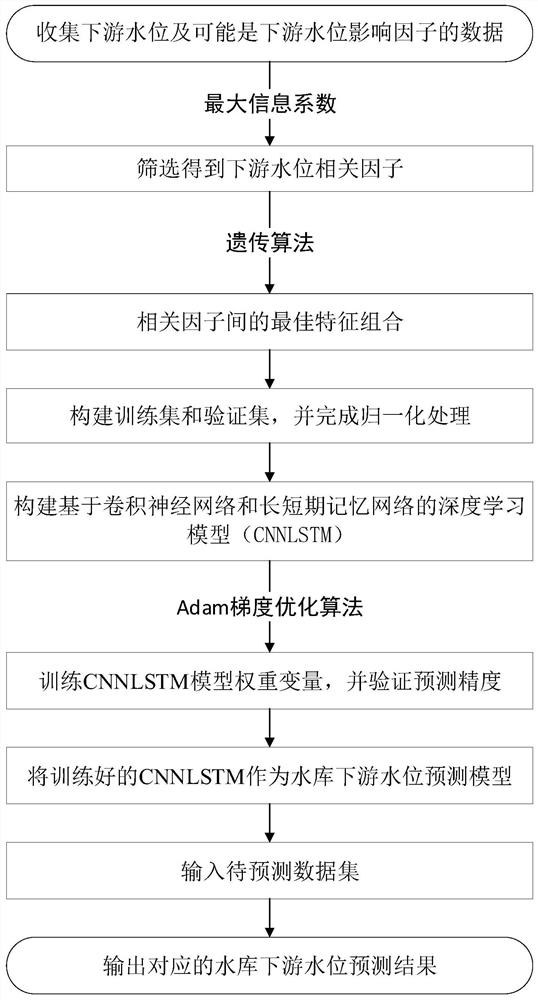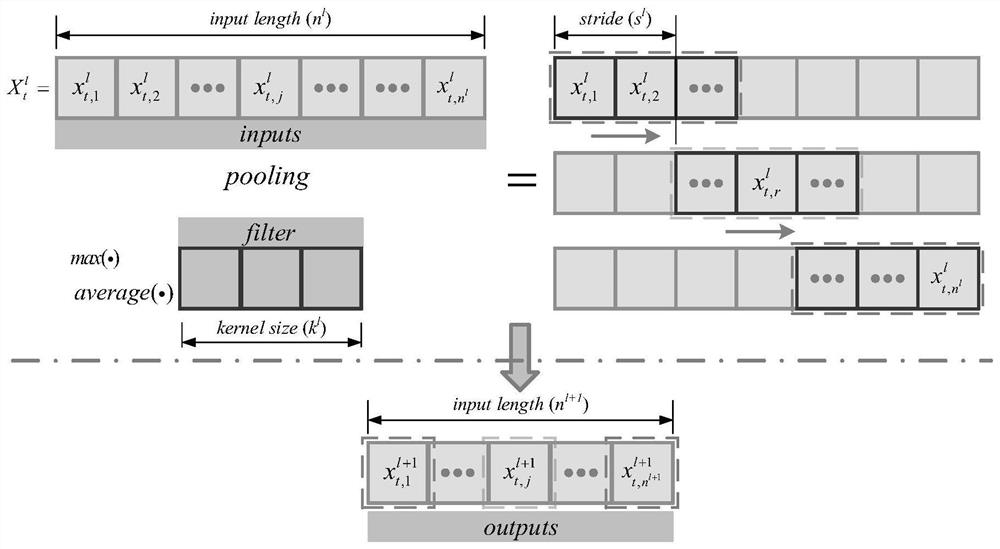A method for predicting the downstream water level of a reservoir based on a deep learning model
A technology of deep learning and prediction methods, applied in neural learning methods, predictions, biological neural network models, etc., can solve problems such as time-consuming, complex modeling, limited literature, etc., and achieve the effect of improving prediction accuracy
- Summary
- Abstract
- Description
- Claims
- Application Information
AI Technical Summary
Problems solved by technology
Method used
Image
Examples
Embodiment
[0087] The present invention takes Gezhouba as the research object, and uses the data in 2017 to verify the validity and accuracy of the model of the present invention. The 12-month downstream water level in 2017 was used as the validation set. For the monthly validation set, the data of the first two months is used as the corresponding training set, and 2 hours are used as a period.
[0088] Select the inbound flow in the historical period (Q i ), drain flow (Q o ), upstream water level (z u ), head (H) and downstream water level (z d ) as a possible influence factor, and the maximum information coefficient (MIC) between it and the downstream water level was calculated, as shown in Table 1. Table 1 lists the MIC values of the two validation sets using March and August as examples, and the factors greater than 0.6 in the table are filled with gray. Where t-0 represents the current period, t-1 represents the previous period, and so on. Therefore, the correlation factor ...
PUM
 Login to View More
Login to View More Abstract
Description
Claims
Application Information
 Login to View More
Login to View More - R&D
- Intellectual Property
- Life Sciences
- Materials
- Tech Scout
- Unparalleled Data Quality
- Higher Quality Content
- 60% Fewer Hallucinations
Browse by: Latest US Patents, China's latest patents, Technical Efficacy Thesaurus, Application Domain, Technology Topic, Popular Technical Reports.
© 2025 PatSnap. All rights reserved.Legal|Privacy policy|Modern Slavery Act Transparency Statement|Sitemap|About US| Contact US: help@patsnap.com



